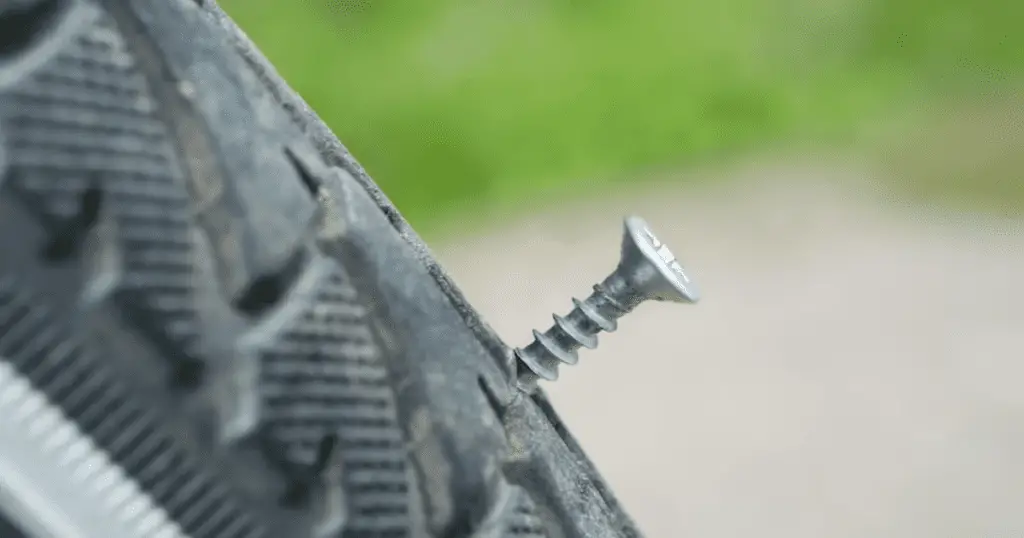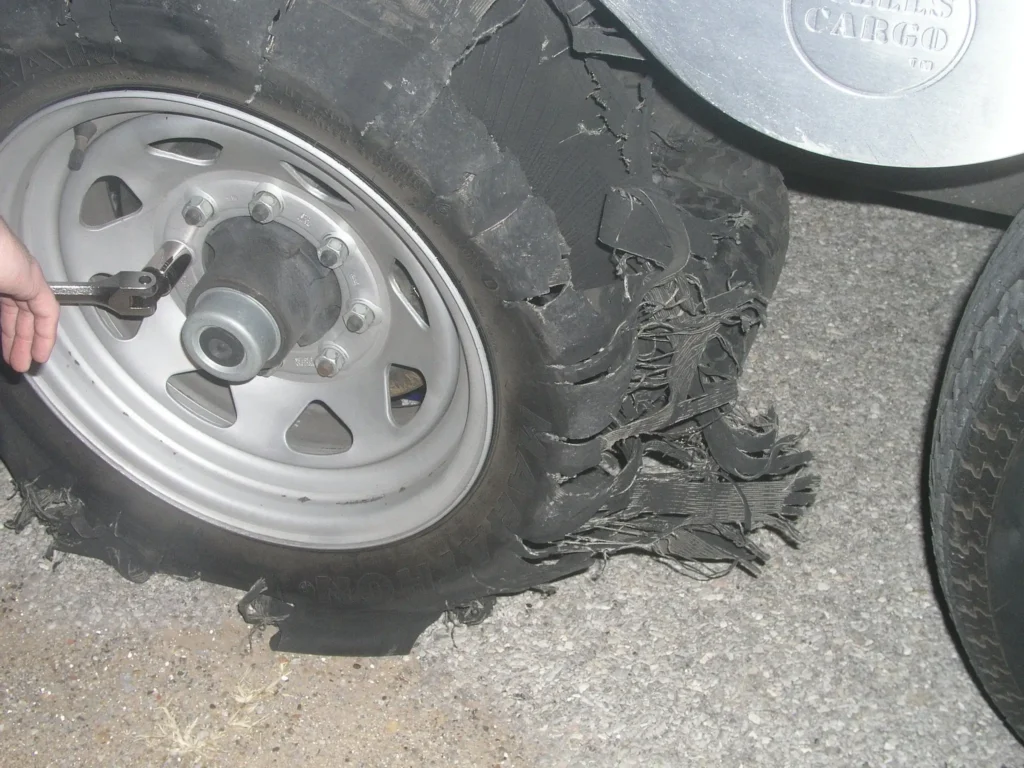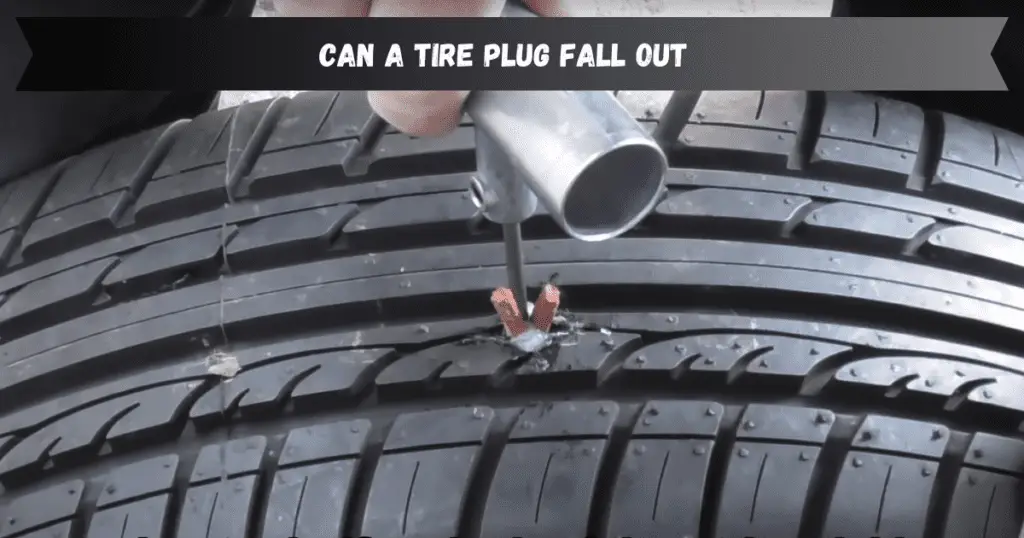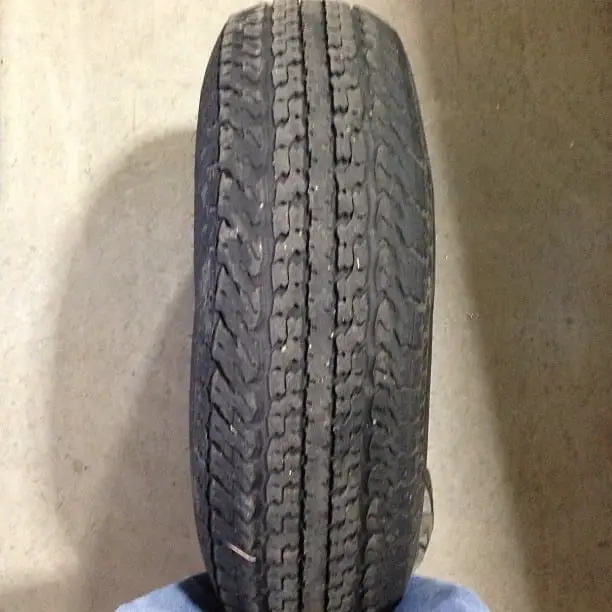Waking up to a flat tire is frustrating enough. But finding it mysteriously re-inflated hours later can be even more perplexing. What causes a tire to drain all night only to regain pressure later? This guide explores the common culprits and fixes to keep your tires pumped up.
Typical Causes For Tire Went Flat Overnight but Now Holds Air
A sudden air loss that resolves itself points to a few key problems:

Puncture Sealed Itself
A small nail or screw can puncture the tread and slowly leak out overnight. But if it partly pulls out or seals with dirt, it may reseal the hole temporarily once pressure drops. The object likely remains lodged in the tire though.
Faulty Valve Stem
The valve stem consists of a metal tube with a rubber gasket seal. If the rubber dries out or gets damaged, it may lose pressure until the tilted angle reseals itself. Bumps in the road can jostle stems momentarily closed too.
Rim Leak
A corroded or damaged wheel rim can allow slow air loss. Like a valve leak, a shifted wheel position can temporarily re-close gaps in the rim overnight before more seepage resumes.
Oxidation
Rubber tires naturally diffuse air molecules through microscopic pores over time. This oxidation rate increases as tires age, allowing more gradual seepage.
Temperature Drop
Overnight cooling condenses the air inside a tire, dropping pressure roughly 1 psi for every 10°F. Topping off in the morning returns it to proper inflation.
Here’s how these common causes differ:
| Cause | Gradual Loss | Regains Pressure | Location |
|---|---|---|---|
| Puncture | Rapid at first | f sealed read | d area |
| Valve stem | Slow | With position change valve | e stem |
| Rim leak | Slow | With position change anywhere | e along rim |
| Oxidation | Very gradual | N/A | No specific point |
| Temperature | Moderate | After re-warming | o leak point |
So pay attention to any pressure loss patterns to narrow down the issue.
Risks of Driving with a Flat
You may be tempted to just re-inflate a mysteriously flat tire and motor on. But driving any distance on a flat, even partially, can lead to substantial damage.
- Ruined tire sidewalls from flexing on the rim without support
- Bent or cracked rims from impacting road hazards unbuffered
- Peeling tread as weakened adhesion gives way
- Shredded valve stems as flattened tires roll over them
- Reduced handling and braking control
Plus, a sudden blowout of the weakened tire could occur, causing you to swerve or lose control. Avoid safety hazards and expensive repairs by diagnosing and resolving flat issues promptly. At night when your car’s headlights randomly turn off what to do?
Finding the Source of the Leak
A slow leak that deflates overnight but re-inflates later requires hands-on investigation:
- Roll the tire to check for embedded objects like nails while listening for any hissing from the tread area or valve stem.
- Remove the tire and dunk sections in water, watching for bubbles indicating holes.
- Clean the rim then coat it with soapy water to observe for bubble leaks as you rotate it.
- Replace valve stem caps and tighten to prevent further leakage.
If you can’t spot the leak source, have a professional perform more advanced diagnostics:
- Hydrostatic testing locates tiny punctures.
- Electronic leak detection uses sensors to pinpoint airflow.
- Load testing under pressure magnifies leaks.
- Thermal imaging shows air loss points.
Getting to the root cause is key to preventing Tire Went Flat Overnight but Now Holds Air events. And help Fix the problem earlier.
See the brake pad warning light illuminated on the dash what to do?
How to Fix a Punctured Tire
If you find an embedded nail or screw, here are your repair options:
- Plug kits insert an adhesive shaft into the puncture to seal it. Suitable for tread punctures only if done properly.
- Professional patches involve dismounting the tire to vulcanize a rubber patch inside, providing a more durable repair.
- Tire replacement is needed for large holes, sidewall punctures, or excessive shoulder wear where plugs won’t hold.
Beware of DIY sealants that can cause balance problems and vibration. For long-term tire integrity, repairs from a qualified tire shop are recommended when possible to prevent Tire Went Flat Overnight but Now Holds Air.
Repairing Leaky Valve Stems
If a valve stem leak proves to be the culprit, try these steps:
- Tighten the valve stem nut fully to compress the rubber gasket inside against the rim. This may seal it.
- Replace rubber valve stem caps that hold air in. Ensure caps seal tightly.
- Swap out damaged valve stem cores that prevent air from escaping fully.
- Install a new valve stem assembly if it shows cracking, dry rot, or persistent seepage.
Also, check tires for adequate pressure at least once monthly to minimize strain on valves. why my car coolant is going through so fast?
Finding and Fixing Rim Leaks
Leaky, corroded, or misshapen rims that lose air can be repaired in a few ways:
- Clean dirt and corrosion from the rim’s inner surface, then apply a fresh bead of sealant in problem areas.
- For minor dents or cracks, specialty internal patch kits are available to plug holes and strengthen weakened areas.
- Severely dented, bent, or extensively corroded rims should be replaced. Attempting to repair extensive damage won’t restore the rim’s safety and integrity.
Avoid excessive curb impacts that can bend and warp rims over time, causing chronic leakage problems.
Preventing Mystery Tire Went Flat Overnight but Now Holds Air
You can reduce the chances of air seepage issues with attentive maintenanc
- Check inflation at least monthly to catch gradual leaks early.
- Keep tires properly inflated to specification to minimize sidewall strain.
- Rotate tires regularly to equalize wear patterns that lead to embedded objects.
- Replace aging tires more prone to oxidation and impact damage.
- Align wheels and balance tires to prevent uneven wear issues.
- Inspect rims periodically for corrosion and clean/seal as needed.
With proactive tire and wheel care, you can pump the brakes on the mystery Tire that Went Flat Overnight but Now Holds Air phenomenon. Pay heed to any suspected leaks now before you’re left stranded on the side of the road with pancaked rubber. Delaying diagnosis and repairs only puts you at risk of blowouts and breakdowns. For further assistance also check out this article Tire Went Flat Overnight but Now Holds Air What to do
Frequently Asked Questions
Do tires lose pressure overnight?
Yes, it’s normal for tires to lose some pressure overnight or over time, usually 1-3 psi monthly. More indicates a leak requiring repair.
Can a tire go flat without a leak?
Not typically – some air loss caused by a puncture, failed valve, or rim leak must be present to deflate a tire fully. Temperature drops overnight only account for 1 psi pressure loss per 10°F.
What happens if you leave a flat tire overnight?
Driving any distance on an entirely flat tire can destroy the tire and wheel. Sidewalls flex excessively, components overheat, and handling is compromised. Never drive more than a few miles on a flat.
How much air does a tire lose overnight?
Expect around 1-3 psi loss per month as tires naturally diffuse air slowly. More rapid loss indicates a puncture or other leak. Tires also lose roughly 1 psi for every 10°F of overnight cooling.
Why is my new tire losing air overnight?
For a brand-new tire, a small puncture, faulty valve stem, or leaky rim seal are the most likely causes. New tires shouldn’t lose excessive air too quickly unless there is damage or a defective component.
Can tires lose air naturally?
Yes, the rubber oxidizes slowly over time, leading to the gradual diffusion of air molecules through the microscopic pores in the rubber. This natural diffusion causes a tire to lose 1-3 psi per month typically.





